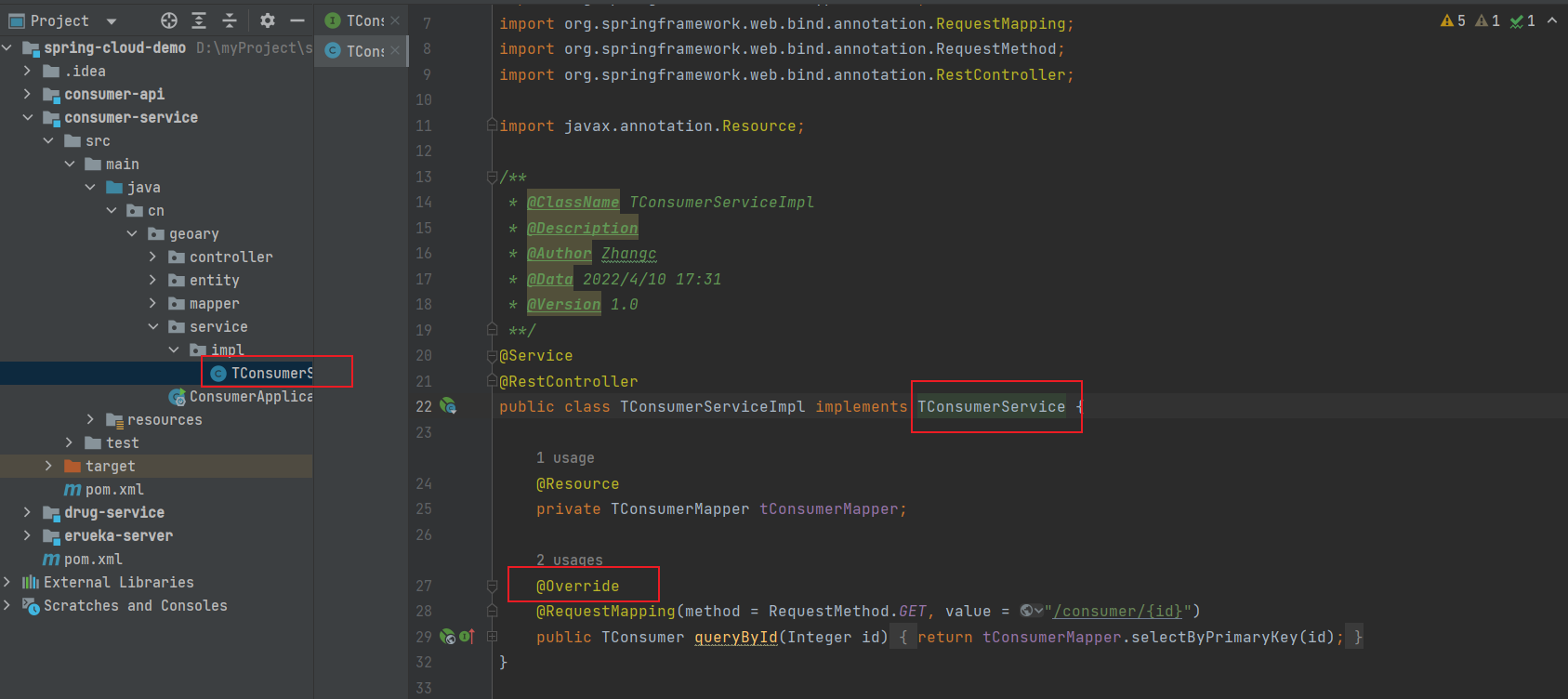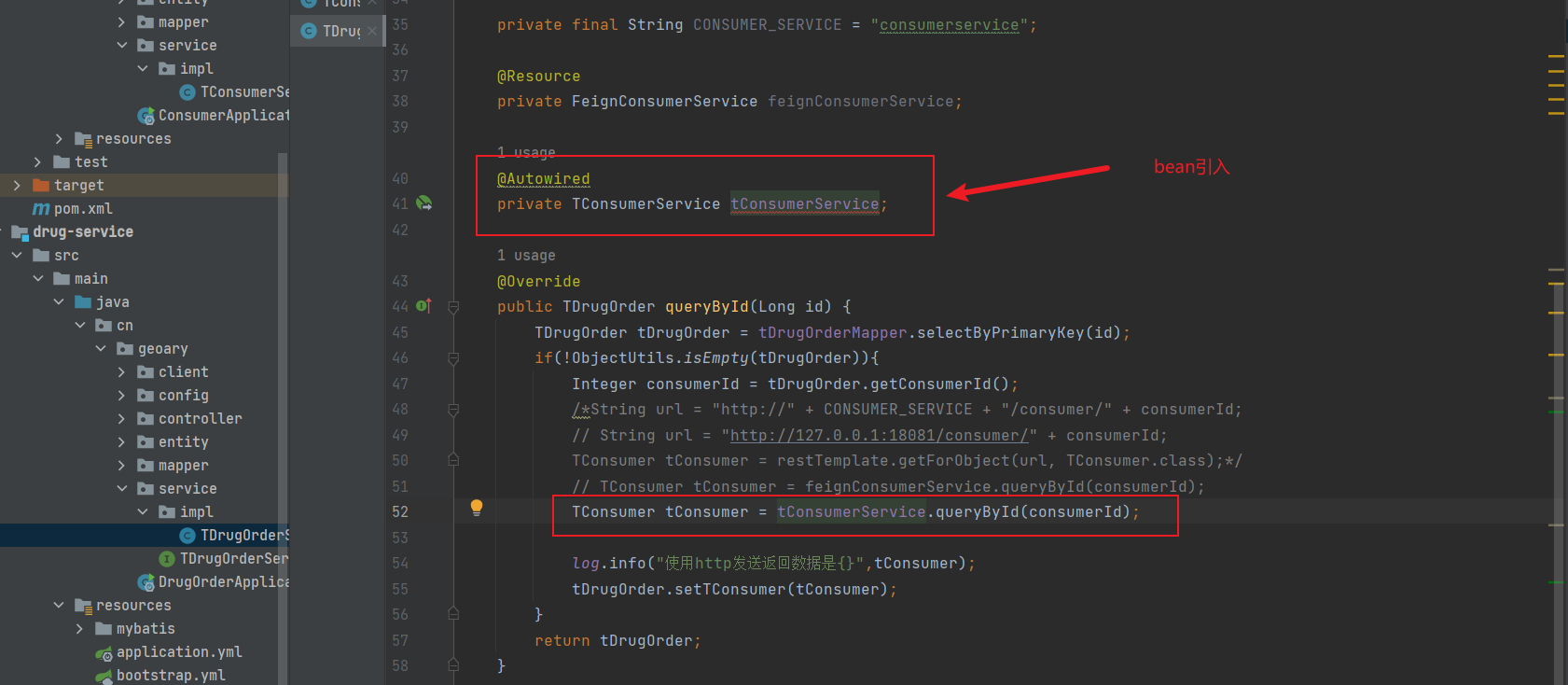Spring cloud使用 - openfeign
openfeign
openfiegn是一个声明式的REST客户端,也就是它可以在微服务中替换 RestTemplate。
引入
- pom.xml中新增依赖
<dependency>
<groupId>org.springframework.cloud</groupId>
<artifactId>spring-cloud-starter-openfeign</artifactId>
</dependency>
- Application中,添加
@EnableFeignClients注解 - 新建一个Java接口
FeignConsumerService,内容如下:
@FeignClient("consumerservice")
public interface FeignConsumerService {
@RequestMapping(method = RequestMethod.GET, value = "/consumer/{id}")
TConsumer queryById(@PathVariable("id") Integer id);
}
在实现类中使用:
引入bean
@Resource
private FeignConsumerService feignConsumerService;
方法调用:
TConsumer tConsumer = feignConsumerService.queryById(consumerId);
这样我们就由之前调用微服务的方式由RestTemplate的方式改成了调用接口的方式。
// 使用restTemplate
String url = "http://consumerservice/consumer/" + consumerId;
TConsumer tConsumer = restTemplate.getForObject(url, TConsumer.class);
// 使用 openfeign
TConsumer tConsumer = feignConsumerService.queryById(consumerId);
从这两种方式可以比较出,使用openfeign我们可以像调用服务的方式一样,服务.方法去调用微服务,不会在业务代码中看到有url这样的标识。
使用建议
在微服务架构中,可以以如下方式使用openfeign更优雅的实现服务的调用。
- 抽取调用接口;
- 接口以openfeign的方式提供出
- 提供者 消费者使用相同的接口api。
也是是说,我们可以让提供者减少controller这一层调用。也就是直接在service层去实现rest调用。
代码如下:
api module:

提供者服务层,直接在service.impl这一层提供rest请求:

消费者代码:
在消费者的Application上需要添加 @EnableFeignClients(basePackages ={"cn.geoary.api.*"})注解 是引入的api注入到bean容器中。

至此服务拆分完成。现在将服务接口于实现方 调用方 进行了解耦。在后续的开发中,我们接口先行,这样 实现 调用可以并行开发,提高开发效率。



【推荐】国内首个AI IDE,深度理解中文开发场景,立即下载体验Trae
【推荐】编程新体验,更懂你的AI,立即体验豆包MarsCode编程助手
【推荐】抖音旗下AI助手豆包,你的智能百科全书,全免费不限次数
【推荐】轻量又高性能的 SSH 工具 IShell:AI 加持,快人一步
· winform 绘制太阳,地球,月球 运作规律
· 震惊!C++程序真的从main开始吗?99%的程序员都答错了
· AI与.NET技术实操系列(五):向量存储与相似性搜索在 .NET 中的实现
· 【硬核科普】Trae如何「偷看」你的代码?零基础破解AI编程运行原理
· 超详细:普通电脑也行Windows部署deepseek R1训练数据并当服务器共享给他人